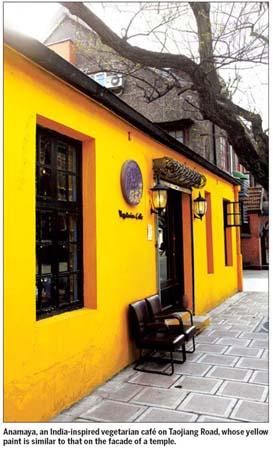The French connection in Shanghai
2010-04-16 10:05 BJT
BEIJING, April 15 -- If there is such a thing as a "hamlet" in Shanghai, it must be that "sleepy triangle", a square kilometer of tree-lined streets and low-rise houses tucked between the hip shopping district of Xujiahui and the button-down commercial strip of Huaihai.
 |
Although sitting on one of the most valuable tracts of real estate in Shanghai, the old buildings, some dating back to the golden era of the 1930s, have escaped the wrecker's ball. There is a refreshing absence of monstrous housing complexes, crowd-drawing shopping malls or glass-and-steel office buildings that are common sights almost anywhere else in this city.
The few signs of progress are denoted by a number of elegant restaurants, chic cafes, an Irish pub and an up-market kitchenware shop. The latest addition to this collection of genteel indulgence is a fashion boutique that caters to, as its owner says, the "refined" taste of those young Shanghai elites who have newly discovered this "cool" enclave.
The best place to start exploring is the junction of Taojianglu, Dongpinglu and Yueyanglu. This was the heart of the French concession in the pre-war colonial days when Shanghai was known as "Paris of the Orient". On these streets, the French colonialists planted neat rows of French phoenix trees that stand to this day.
Among the former villa residences and low-rise apartment blocks lived some of the most famous and powerful figures of those turbulent times of civil strife and foreign invasion.
A quaint old house that is now a music school used to bear the romantic name "Love Mansion" when it was the Shanghai residence of the late Kuomintang leader, Chiang Kai-shek, and his newly-wed bride Soong Mei-ling.

 Mail
Mail Share
Share Print
Print


 Video
Video









 2009 China Central Television. All Rights Reserved
2009 China Central Television. All Rights Reserved